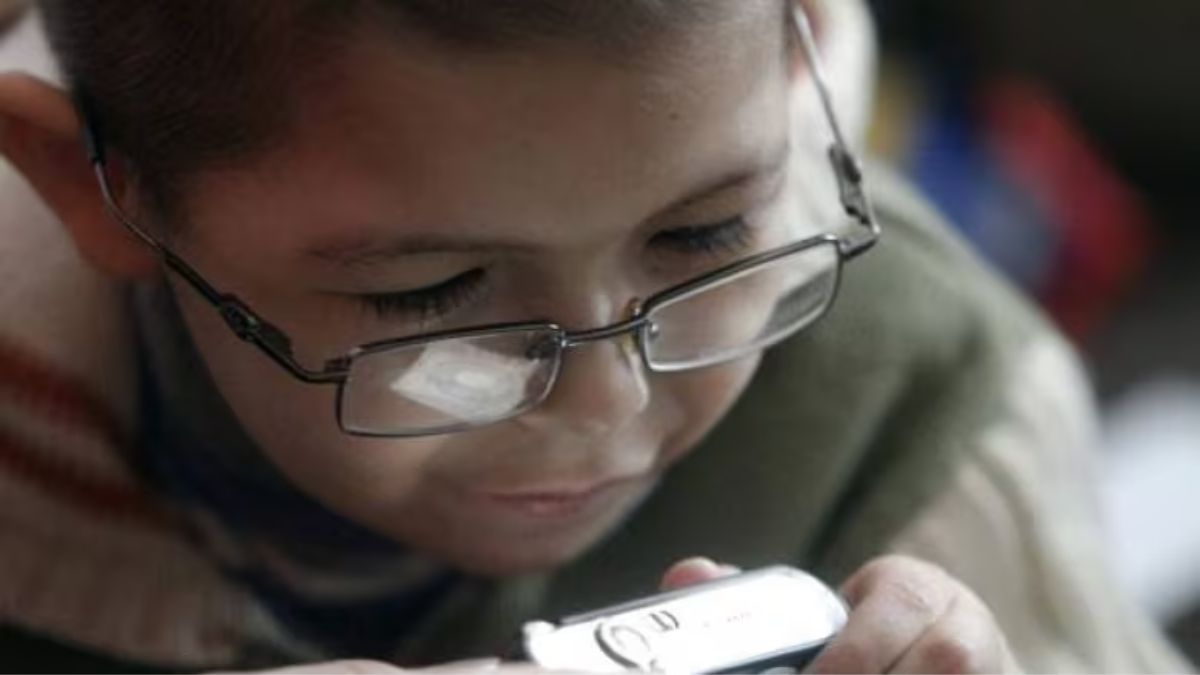If you’re a parent encouraging your kids to play outdoors instead of video games, here’s another reason to keep trying.
Experts at Dr. Agarwal’s Eye Hospital, an eyecare chain, predict that by 2030, “up to one-third of all urban children in India aged 5-15 years are expected to suffer from myopia.”
In a News18 report, Dr. Vijay Parbatani, a consultant ophthalmologist at Manipal Hospital in Kharadi, Pune, described the surge in myopia or short-sightedness cases among children as “an epidemic”.
He stated, “Now, myopia has become an epidemic among children in India. Just a decade ago, the percentage of myopia amongst children was 5 to 7 per cent and today it has jumped to 20 to 25 per cent. And now, it is expected that by 2050, every third child might be suffering from myopia in India.”
But why are children at risk and how can one prevent it? Let’s take a closer look
What is myopia?
According to the Mayo Clinic, myopia, or nearsightedness, is an eye disorder where individuals can see nearby objects clearly but struggle to see objects at a distance. This condition occurs mainly due to the elongation of the eyeball, which disrupts the eye’s ability to focus light properly, resulting in the need for glasses to see comfortably.
Gregory Schwartz, an associate professor at the Departments of Ophthalmology and Neuroscience at the Feinberg School of Medicine at Northwestern University, explained in Reader’s Digest India, “Eyes have a ‘stop signal’ so that they grow proportionally with the head. The signal, however, can get interrupted by genetic and environmental factors. That leads to our eyeballs growing a bit too much, making them too big for the optics (lens and cornea). This mismatch between the eyeballs and optics leads to far-off objects looking out of focus.”
Impact Shorts
More ShortsThough myopia is a fairly common disorder, categorised by symptoms including blurry vision, difficulty seeing distant objects, eye strain, headaches, and fatigue, it is becoming a significant public health issue worldwide.
According to a study published in the US National Library of Medicine in 2021, more than fifty percent of the world’s population will have myopia by 2050.
Why are myopia cases on the rise?
Experts believe increased sedentary lifestyles and reduced outdoor activities are contributing to the rapid rise in myopia cases in children with prolonged exposure from early children to television and mobile screens being the biggest culprit.
“Excessive screen time stimulates the eyes, retina, and brain of children, leading to accelerated myopic changes due to rapid eyeball growth,” Smit M Bavariya, Cataract Surgeon with Dr Agarwals Eye Hospital, Thane, Mumbai explained to IANS.
“Our predictions, based on the slope of 0.8 percent every year, indicate that the prevalence of myopia among urban children will increase to 31.89 percent in 2030, 40 percent in 2040 and 48.1 percent in 2050 This means one out of every two children in India will be suffering from myopia in the next 25 years, up from one in four currently,” Smit added.
Echoing similar concerns, Dr. Himika Gupta, a consultant ophthalmologist at Mumbai-based SRCC Children’s Hospital, told News18 that the prevalence of short-sightedness among urban children has “tripled”, from 4.44 per cent in 1999 to 21.15 per cent in 2019.
Experts acknowledge that while genetics contribute to the onset of myopia, environmental factors also play a significant role. Mahipal Singh Sachdev, Chairman and Managing Director, of Center for Sight, New Delhi told IANS, that the lack of exposure to essential natural light due to being indoors also affected eye health.
“Natural light is crucial for healthy eye development, particularly in children. Exposure to natural light regulates the release of dopamine in the retina, which helps control eye growth and prevents myopia. That is why encouraging outdoor activities, especially during daylight hours, is vital for promoting healthy eye development,” Dr Savitha Arun, senior consultant, anterior segment and electrophysiology, Nethradhama Super Speciality Eye Hospital, Bengaluru told India Today.
How to prevent myopia?
“We think that outdoor time is the best form of prevention for nearsightedness,” Dr. Noha Ekdawi, a pediatric ophthalmologist National Public Radio.
As per guidelines published by All India Ophthalmological Society, even 40 to 120 minutes of outdoor time and sun exposure is associated with reduced incidence of myopia, Dr Parul M Sharma, head of the department, Fortis Eye Institute, Gurugram told _News18.
_
“Thus, schools should include the specific period for outdoor activities in their curriculum. Children on screen for study purposes should learn to take frequent eye breaks from the screen and follow the 20-20 rule — close your eyes for 20 seconds every 20 mins," she said.
In addition to outdoor activities, experts stress the importance of educating children about the risks and advantages of regular outdoor play, the significance of limiting screen time, ensuring adequate lighting during reading, and scheduling regular eye examinations.
)